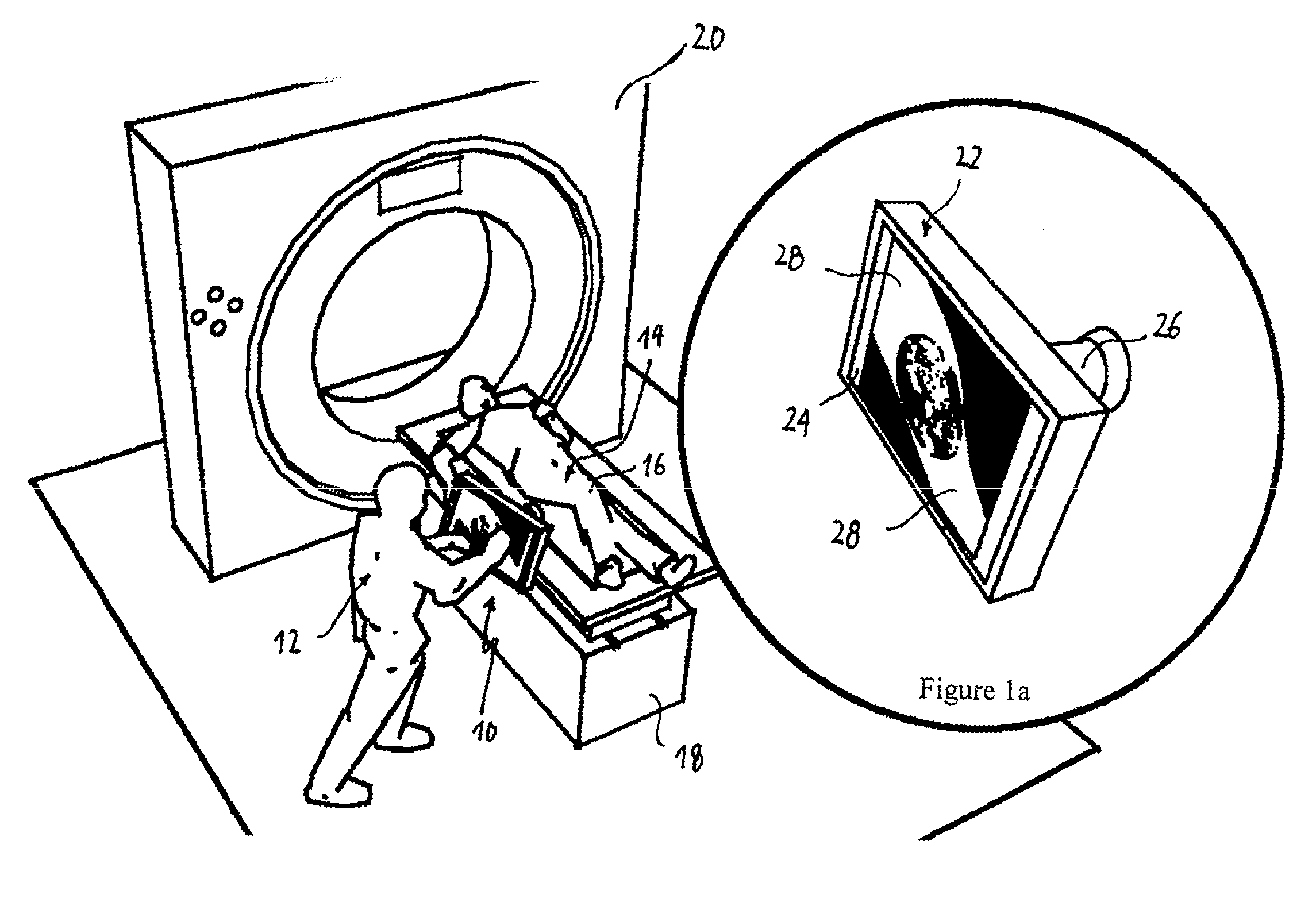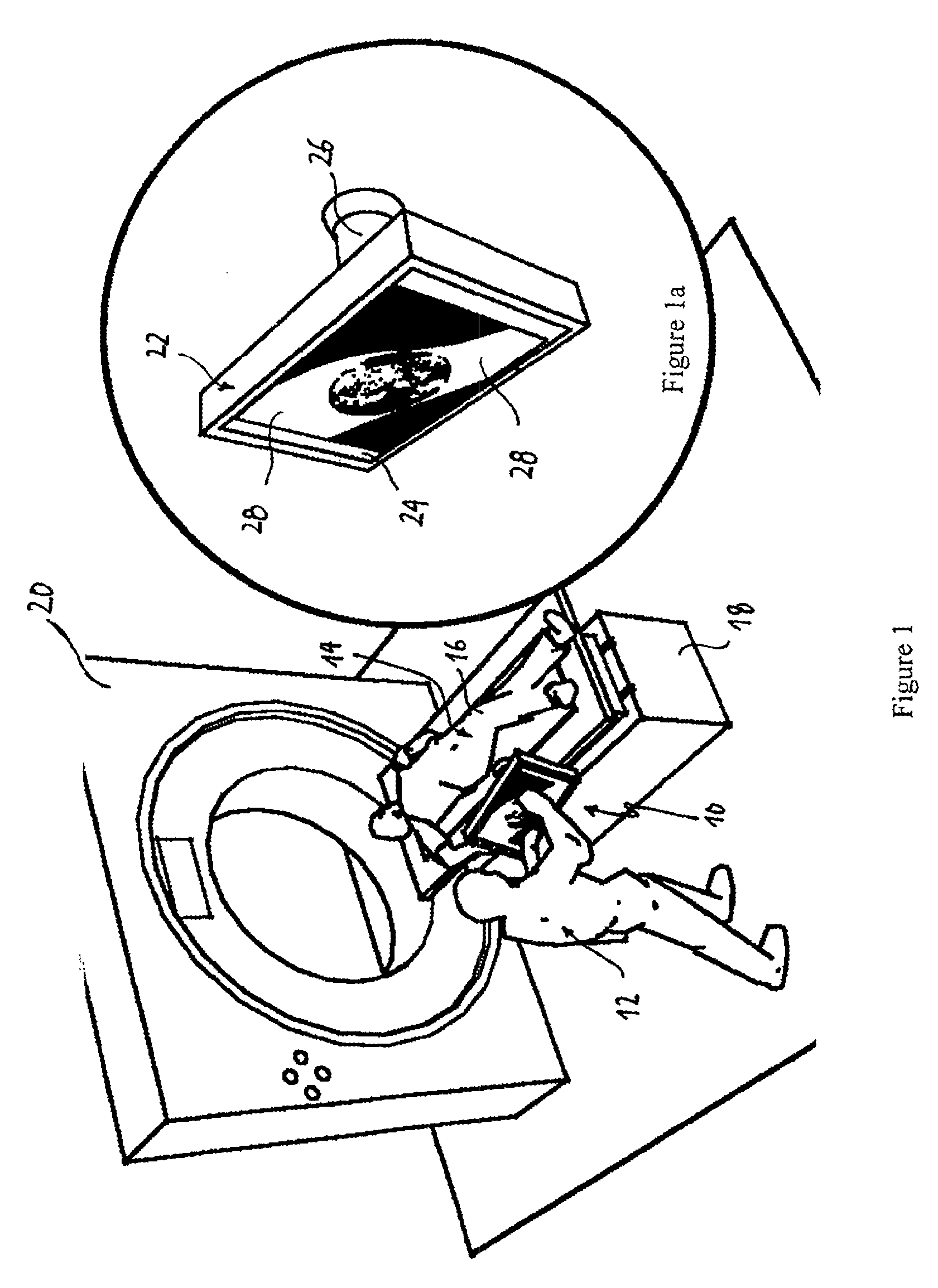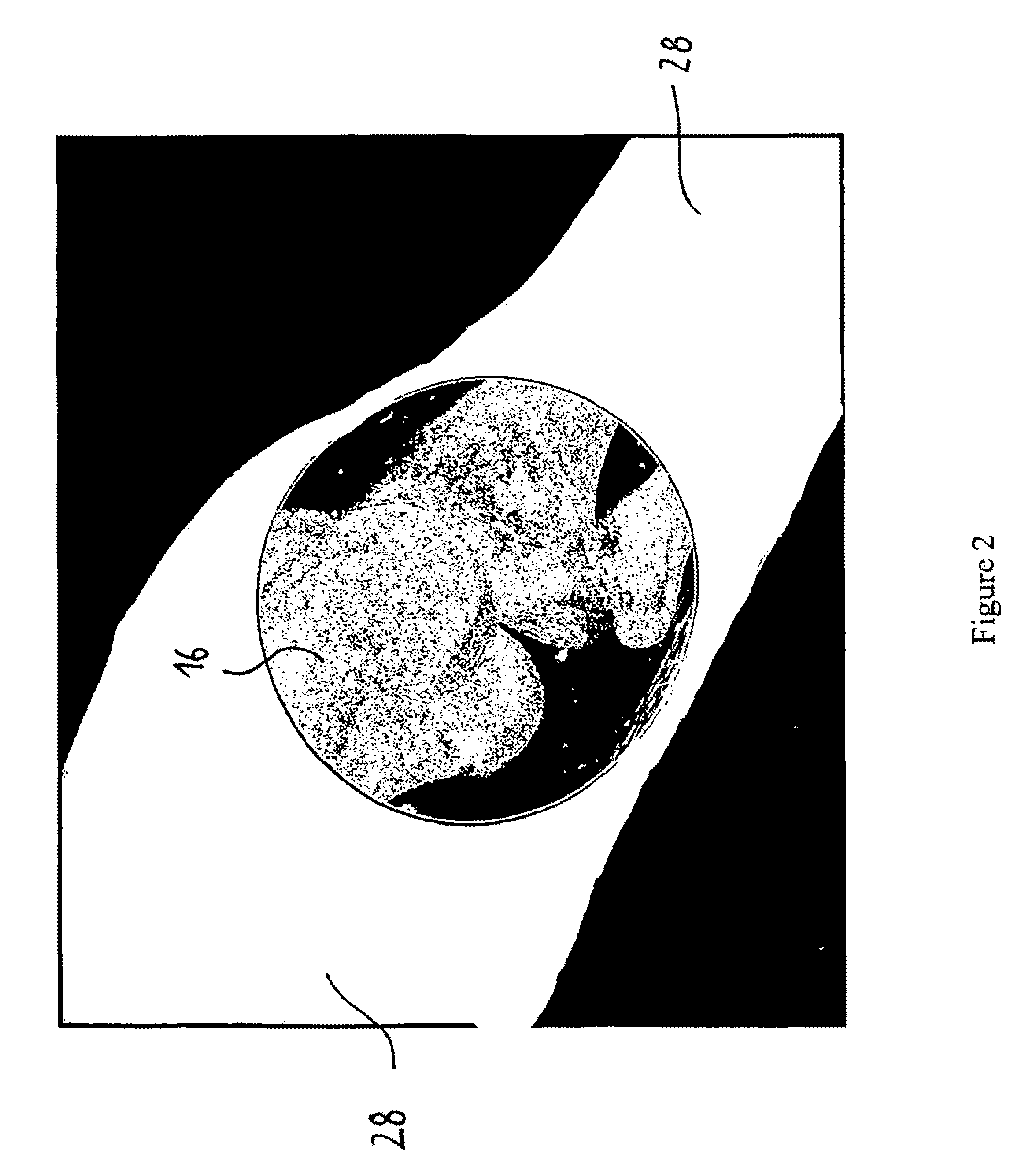Visualization of anatomical data by augmented reality
a technology of anatomical data and augmented reality, applied in the field of system and method for visualizing anatomical data, can solve the problems of prone to failure, limited application range, and limited scope of medical imaging modalities, and achieve the effect of enhancing user flexibility and avoiding lengthy initialization
- Summary
- Abstract
- Description
- Claims
- Application Information
AI Technical Summary
Benefits of technology
Problems solved by technology
Method used
Image
Examples
Embodiment Construction
[0100]FIG. 1 illustrates a visualization system 10 according to the present invention as used by a physician 12 to examine the knee joint 16 of a patient 14. The patient 14 is drawn resting on a movable table 18 in an examination room equipped with a computed tomography scanner 20. However, this is a mere example, and it is one of the advantages of the present invention that the visualization system 10 can be employed in almost any environment, be it in a hospital or at the patient's home.
[0101]The visualization system 10 according to the specific example is illustrated in greater detail in FIG. 1a and comprises a display means 22 equipped with a screen 24. The display means 22 shown in FIG. 1 is a tablet PC, but may alternatively be any other computer device equipped with a screen 24 and suitable for displaying images. Mounted and physically attached to the backside of the display means 22 (opposite to the screen 24) is a time-of-flight camera 26. The time-of-flight camera 26 may a...
PUM
 Login to View More
Login to View More Abstract
Description
Claims
Application Information
 Login to View More
Login to View More - R&D
- Intellectual Property
- Life Sciences
- Materials
- Tech Scout
- Unparalleled Data Quality
- Higher Quality Content
- 60% Fewer Hallucinations
Browse by: Latest US Patents, China's latest patents, Technical Efficacy Thesaurus, Application Domain, Technology Topic, Popular Technical Reports.
© 2025 PatSnap. All rights reserved.Legal|Privacy policy|Modern Slavery Act Transparency Statement|Sitemap|About US| Contact US: help@patsnap.com



